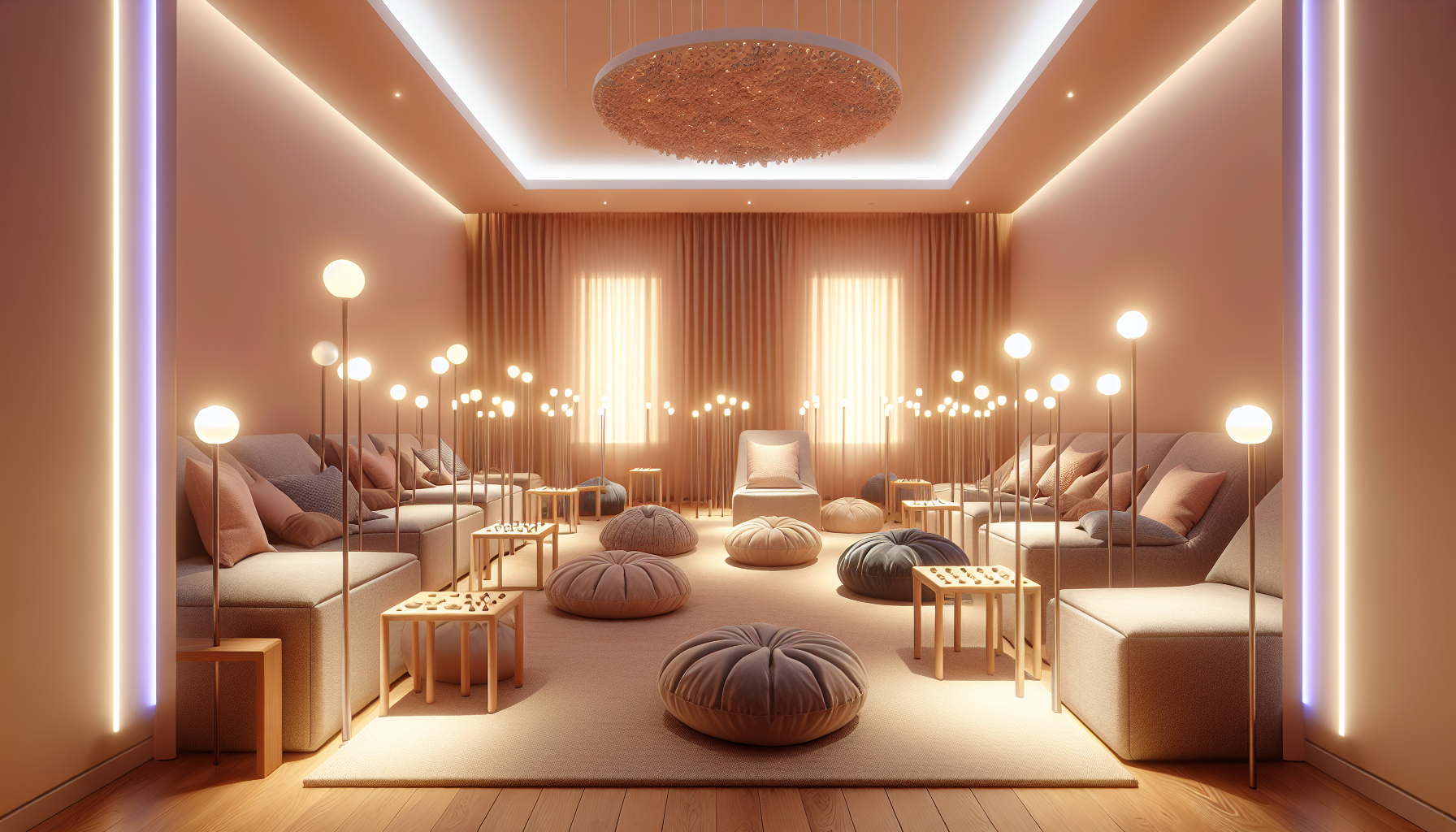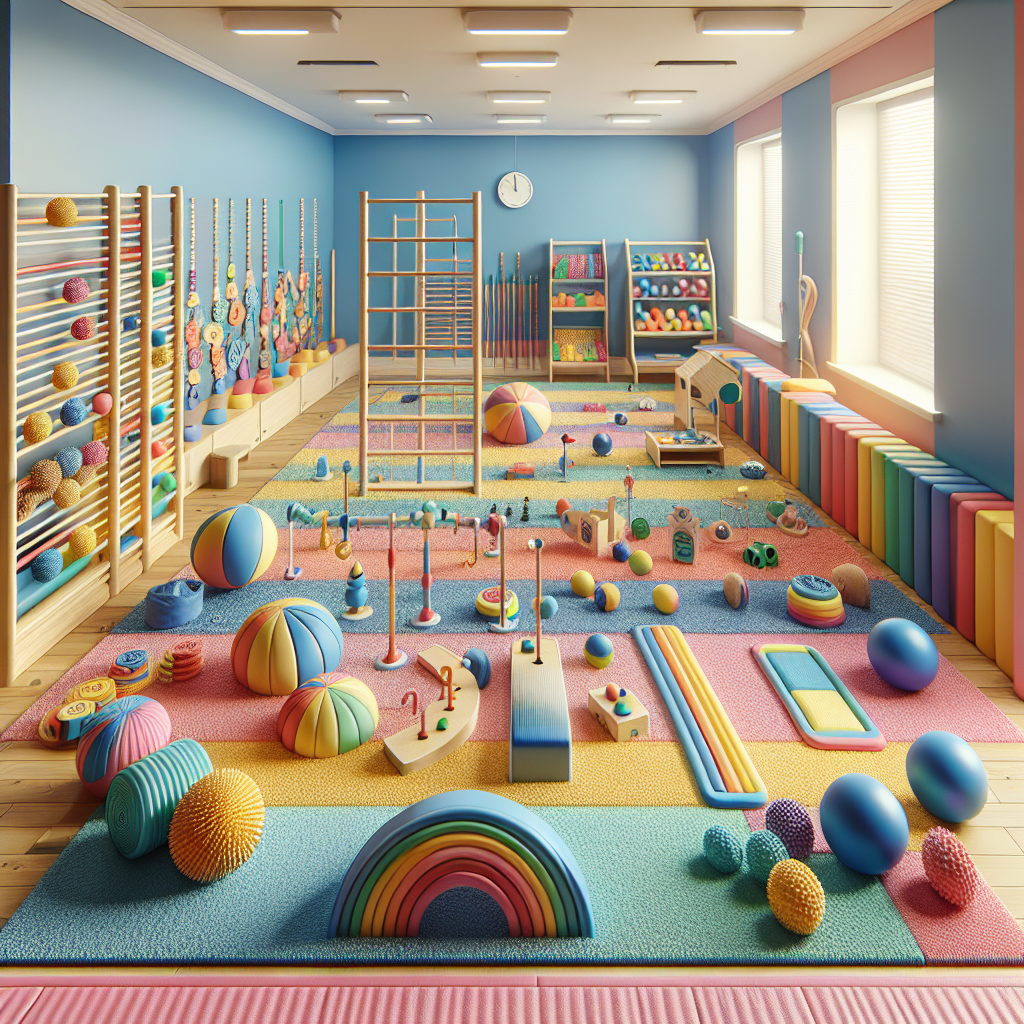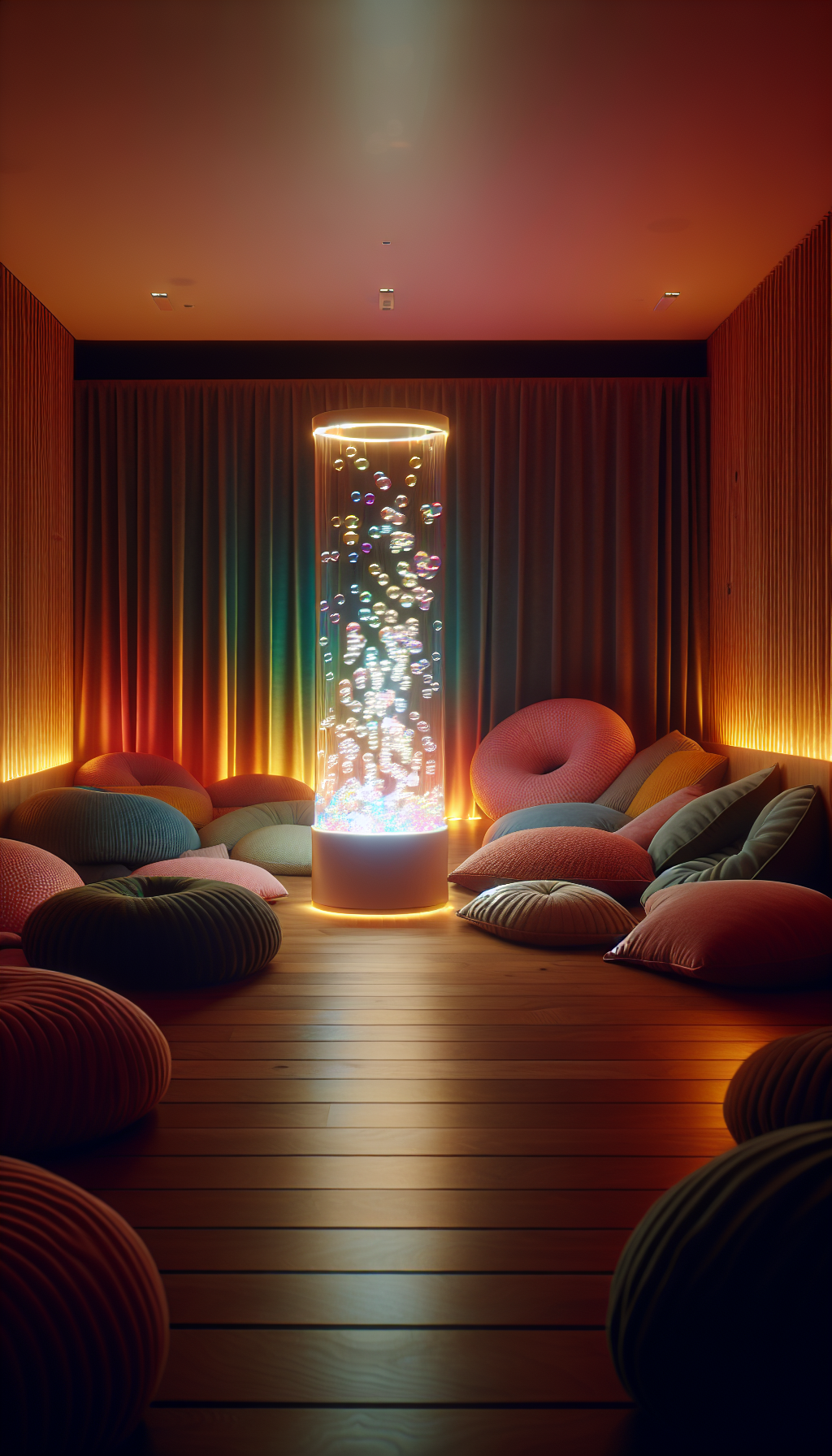Sensory rooms are specialized environments designed to deliver stimuli to various senses in a controlled, safe space. These rooms can benefit individuals with sensory processing disorders, autism, ADHD, and even those under stress needing a calming environment. This comprehensive guide will explore the intricacies of sensory room design and implementation, ensuring it becomes a haven for sensory therapy and relaxation.
Understanding Sensory Rooms
A sensory room is a therapeutic space with equipment and materials that help to engage and refine the senses. These rooms can be tailored for stimulating experiences, such as bright colors and interactive equipment, or calming ones, which utilize soft lighting and gentle textures. The purpose of a sensory room is to create an environment that can have a therapeutic impact on an individual’s sensory health, which is an integral part of overall wellbeing (Sensory Health).
Core Elements of Sensory Room Design
1. Identify the Purpose
Before starting the design process, it’s essential to understand the room’s intended use. Will it cater to children with developmental disabilities or adults requiring stress relief? The target audience will dictate the room’s design, equipment, and sensory elements.
2. Selecting the Right Equipment
The equipment in a sensory room should serve the specific sensory needs of its users. This can include tactile panels, fiber optics, soft play areas, and auditory devices. For a more comprehensive approach, integrating Sensory Friendly Products and Innovations can enhance the room’s therapeutic potential.
3. Creating a Safe Space
Safety is paramount in a sensory room. All equipment should be securely installed, and materials should be non-toxic and easy to clean. Space should be free of sharp edges and have adequate padding where necessary to prevent injury.
4. Lighting and Acoustics
The room’s lighting should be adjustable to create different moods and atmospheres. Soft, dimmable lights or LED color-changing lights can transform the room’s feel instantly. Acoustics also play a crucial role, with soundproofing elements ensuring that the room remains a sanctuary away from the bustling outside world.
5. Color and Texture
Colors and textures can significantly impact mood and sensory processing. Cool, soothing colors are often preferred for calming rooms, while vibrant, contrasting colors might be used in stimulating spaces. Textured walls, floors, and furniture can provide tactile feedback that is essential for sensory development.
Implementing Your Sensory Room
After designing the room, the next step is implementation. This involves:
- Sourcing high-quality materials: Ensure that all materials meet safety standards and are durable for long-term use.
- Engaging professionals: Depending on the complexity, you may need to involve contractors, occupational therapists, and other professionals in the setup process.
- Training staff or caregivers: Those supervising the sensory room should understand how to use the equipment effectively and safely.
Benefits of a Sensory Room
Sensory rooms can offer a multitude of benefits, which include:
- Enhanced sensory processing: Users can develop better processing capabilities by engaging their senses in a focused manner.
- Improved social interactions: As explored in Impact of Sensory Health on Social Interactions, a sensory room can be a social space where individuals learn to engage with others in a controlled environment.
- Stress relief: Sensory rooms provide a retreat for individuals to decompress and manage their stress levels.
Supporting Research and Resources
To further understand the impact and methodologies behind sensory rooms, here are several niche resources:
- A study on the effects of sensory room therapy on individuals with autism
- Guidelines on designing multi-sensory environments for dementia care
- Research on sensory modulation and its implications for design
These resources delve into the specifics of sensory room benefits and design considerations, providing valuable insights for anyone looking to implement a sensory room in their facility or home.
Considerations for Different Age Groups and Needs
The design and implementation of a sensory room should be adaptable to various age groups and needs. For instance, the requirements for Children with Disabilities will differ significantly from those of the elderly with sensory impairments. It’s crucial to consider these differences during the planning phase to ensure the space serves its intended purpose effectively.
Maintaining Your Sensory Room
Maintenance is key to ensuring the longevity and efficacy of your sensory room. Regular cleaning, equipment checks, and updates to worn-out materials will keep the space inviting and functional. Engaging with users to get feedback can also provide insights into how the room can be improved over time.
Conclusion
Designing and implementing a sensory room is a thoughtful process that can significantly enhance the sensory health and overall wellbeing of its users. By considering the room’s purpose, selecting the right equipment, focusing on safety, and ensuring proper maintenance, a sensory room can become a vital part of therapeutic practices. As awareness of sensory health grows, the importance of these specialized spaces will continue to gain recognition as a cornerstone of inclusive and supportive environments.
Whether for individuals with sensory processing disorders, autism, ADHD, or those simply seeking a tranquil space, sensory rooms offer a unique and beneficial experience. By following the guidelines outlined in this article, and with the support of Technologies for Managing Sensory Processing Disorders, you can create an environment that fosters sensory health and encourages personal development in a comforting and nurturing setting.



